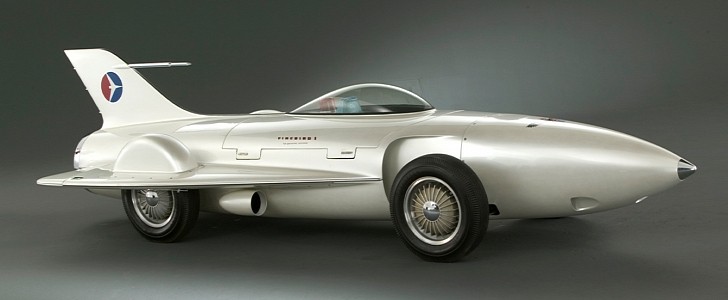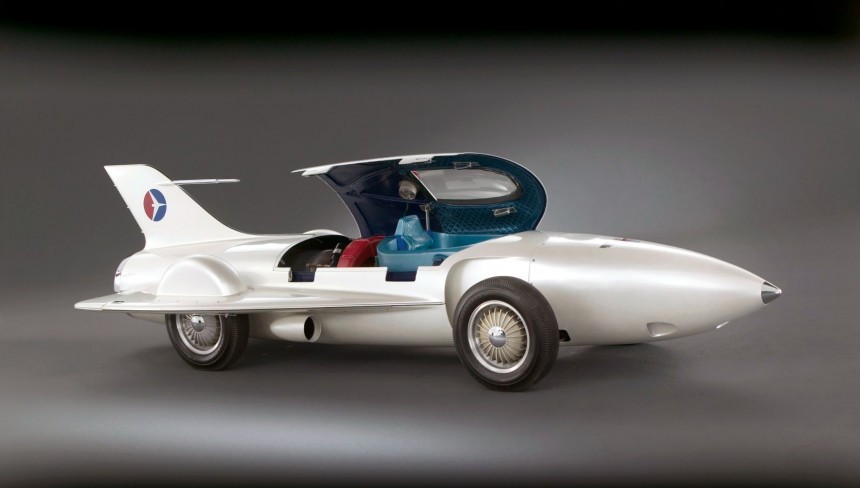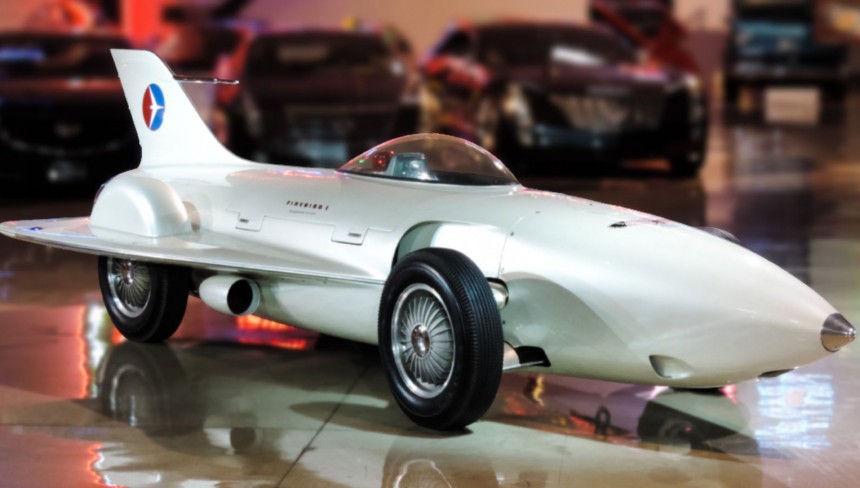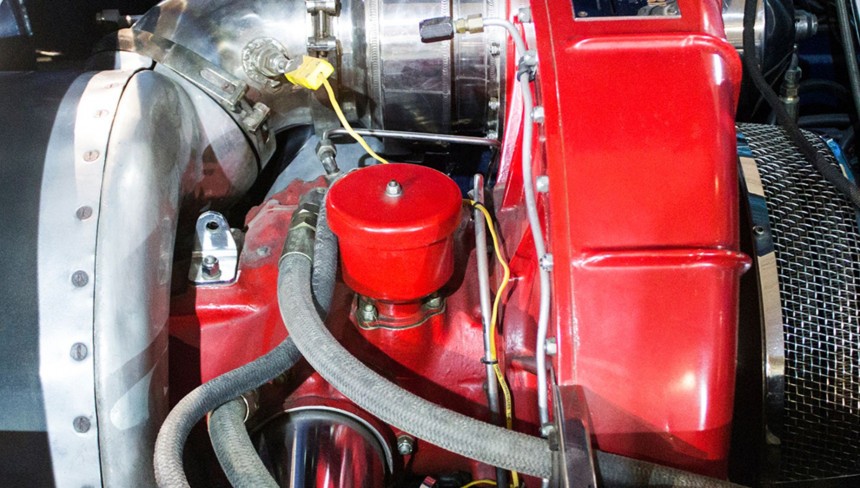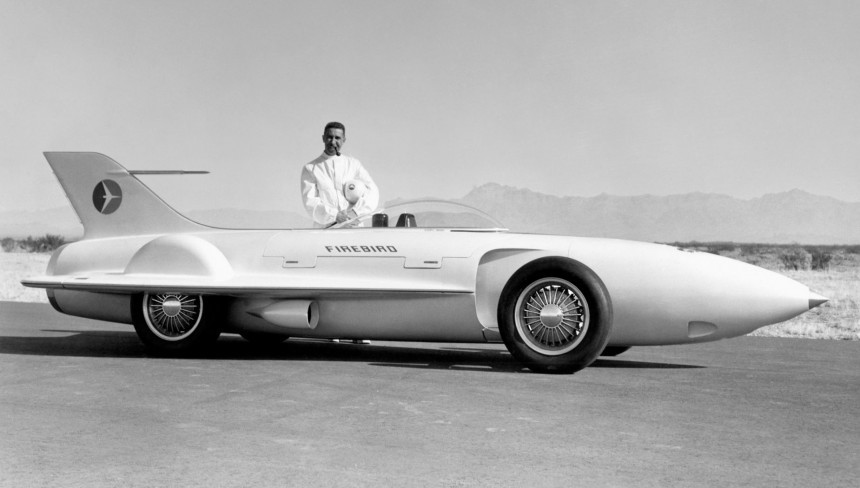Among automotive aficionados, the Firebird nameplate is almost instantly associated with Pontiac’s line of pony cars built from 1967 to 2002. Yet few remember that it was also used for a quartet of innovative turbine-powered concept cars from the 1950s. The first and arguably most outrageous was codenamed Firebird XP-21, a fighter jet on wheels that deserves to be remembered.
In the 1950s, American industry was booming and within the automotive sector, manufacturers were stepping outside the box like never before. It was a period when engineers and designers were free to innovate, creating a wide range of groundbreaking vehicles.
At General Motors, work resumed on researching the feasibility of gas turbine engines in automobiles, a project that was started as early as the 1940s.
The idea of modifying an aircraft powerplant and stuffing it in a car wasn’t new, with Fiat successfully creating the S76 “Beast of Turin” in 1910. However, using a jet engine was an entirely different venture that captivated the minds of many bright engineers of the era.
One of them was Emmett Conklin, a legendary figure in GM history. He joined the company at a young age, in the 1920s, initially as a construction worker for the Milford Proving Ground, the world’s first dedicated automobile testing facility. After that, he swapped test vehicles' tires for a living, then became a test driver. An extremely intelligent person with a passion for engineering, Conklin often worked on the test vehicles he drove, repairing, and improving them. Management took notice and promoted him to test track supervisor and ultimately, he was chosen to work on the turbine research program that kicked off in the 1940s.
After the Second World War ended and GM started pumping resources into the project once again, Conklin was chosen to oversee the development of America’s first fully functioning gas turbine car.
Conceived strictly as an engineering and styling concept, the Firebird I was ready in 1953. Designed by Harley J. Earl, the man behind Project Opel which eventually became the Chevrolet Corvette, it looked more like a fighter jet than an actual car.
Made entirely out of fiberglass-reinforced plastic, the bodywork (or rather a fuselage) inspired by a Douglas F4D Skyray fighter jet featured small delta wings, a tailfin decorated with the logo of the GM’s air transport section (GMATS), and a bubble canopy that covered a single-seat cockpit.
The nose of the vehicle housed a 35-gallon (132.5 liters) fuel tank and behind the tiny cockpit was a groundbreaking powerplant with an awesome name. Developed under the direction of Charles L. McCuen, the Whirlfire Turbo-Power was a two-part turbine engine that contained a gasifier connected via a flexible shaft to a secondary power unit.
The gasifier which incorporated a compressor and a turbine mixed compressed air with fuel inside two combustion chambers. It produced hot gas that ran a second turbine inside the power unit, which was linked to the Firebird’s rear axle through a two-speed planetary transmission.
Output was rated at 370 hp (280 kW) and the car could reach a theoretical top speed of 200 mph (322 kph). This required a capable braking system so engineers mounted 11-inch (28 cm) brake drums on the outside to help disperse heat more efficiently. Furthermore, split brake flaps were fitted on the edges of the wings that could be activated using switches on the steering wheel.
The Firebird I was so intimidating that the only man deemed qualified to drive it during initial tests was none other than Emmett Conklin. Legend has it that he took it up to 100 mph (160 kph), but immediately after shifting into second gear the tires lost traction which almost resulted in a crash. He was quoted as saying “I’m too old for this ****!” and eventually handed test driving duties to three-time Indy 500 winner and engineer Mauri Rose.
Before testing commenced at the Indianapolis Motor Speedway, Charles L. McCuen also drove the prototype but ended up crashing and almost getting himself killed in the process. The car was repaired, and Rose eventually ran multiple tests but much to the experienced driver’s frustration, GM banned further high-speed runs. Thus, the turbine-powered concept never got to reach its hypothetical top speed.
One of the wildest concept cars ever created, the Firebird I XP-21 paved the way for three more gas turbine-powered GM prototypes released in the 1950s. Along with the Rover JET1 or Fiat Turbina, it was among the first cars to use this type of engine.
It made its public debut at the 1954 Motorama, an auto show organized by GM from 1949 to 1961, and was used as a successful promotional vehicle for the company for years to come.
It can now be admired at the GM Heritage Center in Sterling Heights, Michigan. A miniature version tops the Harley J. Earl Trophy, which is given to the winner of the Daytona 500.
Courtesy of DtRockstar1, you can watch both the Firebird I and its second sibling in the YouTube video below. Unfortunately, it is being towed into place for the 2018 Eyes On Design Show, so you won’t hear the engine roaring but it’s one of the best modern footage of the iconic concept car.
At General Motors, work resumed on researching the feasibility of gas turbine engines in automobiles, a project that was started as early as the 1940s.
The idea of modifying an aircraft powerplant and stuffing it in a car wasn’t new, with Fiat successfully creating the S76 “Beast of Turin” in 1910. However, using a jet engine was an entirely different venture that captivated the minds of many bright engineers of the era.
After the Second World War ended and GM started pumping resources into the project once again, Conklin was chosen to oversee the development of America’s first fully functioning gas turbine car.
Conceived strictly as an engineering and styling concept, the Firebird I was ready in 1953. Designed by Harley J. Earl, the man behind Project Opel which eventually became the Chevrolet Corvette, it looked more like a fighter jet than an actual car.
The nose of the vehicle housed a 35-gallon (132.5 liters) fuel tank and behind the tiny cockpit was a groundbreaking powerplant with an awesome name. Developed under the direction of Charles L. McCuen, the Whirlfire Turbo-Power was a two-part turbine engine that contained a gasifier connected via a flexible shaft to a secondary power unit.
The gasifier which incorporated a compressor and a turbine mixed compressed air with fuel inside two combustion chambers. It produced hot gas that ran a second turbine inside the power unit, which was linked to the Firebird’s rear axle through a two-speed planetary transmission.
The Firebird I was so intimidating that the only man deemed qualified to drive it during initial tests was none other than Emmett Conklin. Legend has it that he took it up to 100 mph (160 kph), but immediately after shifting into second gear the tires lost traction which almost resulted in a crash. He was quoted as saying “I’m too old for this ****!” and eventually handed test driving duties to three-time Indy 500 winner and engineer Mauri Rose.
Before testing commenced at the Indianapolis Motor Speedway, Charles L. McCuen also drove the prototype but ended up crashing and almost getting himself killed in the process. The car was repaired, and Rose eventually ran multiple tests but much to the experienced driver’s frustration, GM banned further high-speed runs. Thus, the turbine-powered concept never got to reach its hypothetical top speed.
It made its public debut at the 1954 Motorama, an auto show organized by GM from 1949 to 1961, and was used as a successful promotional vehicle for the company for years to come.
It can now be admired at the GM Heritage Center in Sterling Heights, Michigan. A miniature version tops the Harley J. Earl Trophy, which is given to the winner of the Daytona 500.
Courtesy of DtRockstar1, you can watch both the Firebird I and its second sibling in the YouTube video below. Unfortunately, it is being towed into place for the 2018 Eyes On Design Show, so you won’t hear the engine roaring but it’s one of the best modern footage of the iconic concept car.
